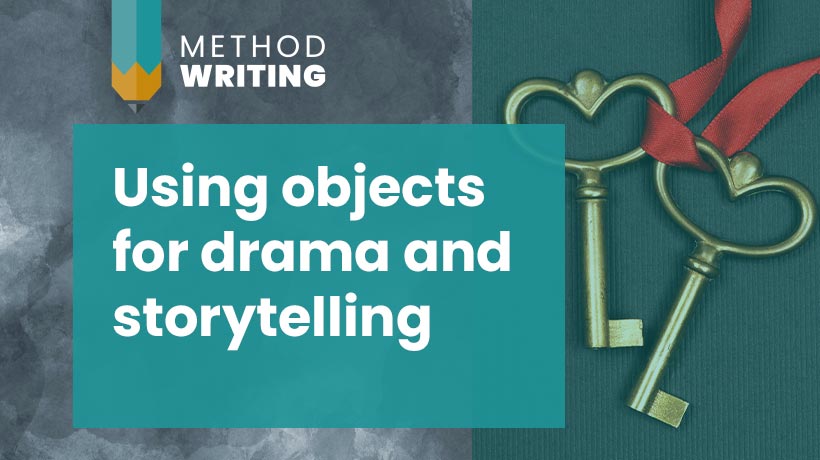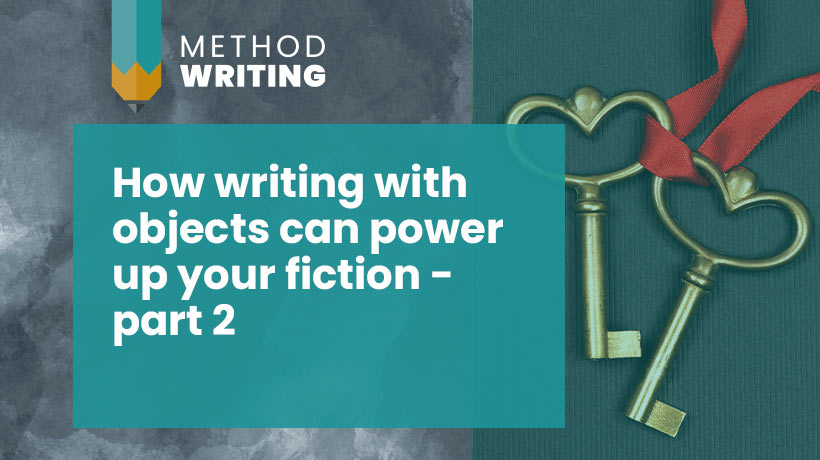Writing technique – secrets of dramatic action
Why are car chases boring? Because they’re undramatic! In dramatic writing, “dramatic action” has a particular definition. It means action with a clear, urgent motivation behind it. Action that lacks intention is simply movement, and scenes without it turn out somehow flat, even if they’re full of energy on the surface. Once you’ve grasped the basics of dramatic action, you’ll transform the power of your storytelling. Actors and screenwriters know this stuff. Do you? Here’s an overview.
‘Dramatic action’ – what’s my motivation?
Dramatic action is never just action for action’s sake. It always has significant meaning for the characters.
So when you’re writing a scene, make sure your characters want something enough to propel them into action. That’s the fuel that drives the scene.
You’ve probably heard the actors’ question, “what’s my motivation?” They could equally say, “what’s my dramatic action?”
Do they want to please their companion? Connect with them? Calm them down? Persuade them to do a business deal? Relieve their thirsty throat?
Say your character picks up a bottle to pour someone a drink. What’s their underlying aim here?
In dramatic writing, every simple action or gesture needs a meaningful dramatic impulse behind it.
Actors use different words to describe this impulse: motivation, intention, aim, goal, drive. In screenwriting, writers typically talk about character wants.
They all refer to the same concept: the driving force behind an action.
Why is dramatic action important in storytelling?
Dramatic action creates momentum in a story or scene. Without it, scenes are flat, with a vague sense of “not going anywhere”.
If your scene feels somehow pointless, with no energy, even if they characters are rushing around at top speed, it’s a safe bet they don’t have a strong dramatic action.
Dramatic action helps to reveal the essence of characters and their relationships.
It therefore moves events along in a meaningful way.
It creates dynamic moments of change and decision-making.
So it also creates twists and turning-points.
And because of all this, it makes the story more engaging for the audience.
So it’s a writing technique every writer needs a firm grip on.
But there’s loads going on in my book! I hear you cry. Battles,
Yes, dramatic action might involve car chases, sword-swishing, hysterics or other dynamic behaviour.
But this on its own is empty spectacle.
When you write a true underlying dramatic action, however, it will get audiences excited and leaning into the story.
In my experience, this powerful technique needs to be carefully engineered. Don’t leave it to chance or intuition until you’ve developed those writing instincts through practice.
Writing practice:
Try writing a scene with an object at its heart – something large, like a suitcase, or something smaller, like a key. Put your characters on different sides, with different plans for this object.
Objects are physical and often lend themselves to negotiation between characters. Giving the characters different wants creates tension between them. Who wins? Raise the stakes to create more tension.
Why are car chases dramatically boring?
I often find car chases boring. It’s often the time when I go to switch the kettle on. And I discovered I’m not alone!
So why are car chases boring? Because even if they have loads of chicken-chasing and crashing market stalls, they usually only have one underlying dramatic action.
Something like:
Someone hunts someone down.
Yes, there’s mounting spectacle, ever-bigger crashes, ever more touch-and-go brushes with death. But those are escalations – not reversals, or changes in intention.
For a story and characters to come truly to life, it needs twists and turns of power, status, emotion and drive – not simply geography or type of obstacle.
Dramatic action is the beating heart of story
Dramatic actions are the beating heart of drama. They come from deep within the characters.
Characters who want something so much that they’ll go to amazing lengths to get it.
Who are so driven and motivated, they need to take action or burst.
Characters who are under so much pressure, they need to decide. Now.
The joy of dramatic action for audiences is seeing the characters under pressure, feeling that pressure along with them, and watching what they decide, how they turn, what they do (the word drama comes from the ancient Greek for to do, to act).
Dramatic action allows us to feel the characters’ pain, hope, and fear, and live it alongside them, without coming to harm. So, here’s an example:
Dramatic action, or spectacle? A quick quiz
What’s more dramatic?
- a couple racing their red Lamborghini through the bazaars of Istanbul
- a man taking off his wedding ring on his first day at a new job
At first glance, (1) seems far more dramatic. Sports car! Exotic location! Lots of crashing through stalls! Screeching round tight corners! A couple, probably good-looking, escaping from the villain, or chasing the villain down.
But in terms of dramatic action, the answer is (2). And it’s not just because (1) is a thriller trope seen many times before. So is (2). They’re both familiar scenarios.
The difference with (2) is that it’s a decision point for the character. The action he takes at that critical point will speak volumes.
Will we see him twirl the ring on his finger, think about it for a long second, then deliberately, coldly remove it and shut it in a drawer?
Or will we see him force the ring onto his finger with a sigh?
How he decides will set in motion the next chain of events. That’s dramatic!
The fun of spectacle
The godfather of story structure, Aristotle, put spectacle at the bottom of his hit list of dramatic ingredients. He thought that it was a superficial way of entertaining the masses.
I wouldn’t go quite that far! Spectacle can be wonderful to watch, and I’m a sucker for the James Bond films, with their glorious chase sequences: down ski slopes and twisty mountain roads, along the Thames… they’re cracking great fun.
But often, spectacle has no real dramatic heartbeat. And when that happens, it’s just movement.
If you find that happening in your story, get back to the characters, what they want, what’s driving them. Give them fierce desire and plenty to lose if they don’t achieve their goals. Then see your characters burn with new momentum and drive.
Excerpt from Dramatic Techniques for Creative Writers. “A brilliant book!” – Elizabeth

Read more articles on dramatization and writing with objects:
How writing with objects can power up your fiction
How to use objects in your fiction writing
Writing technique – secrets of dramatic action
